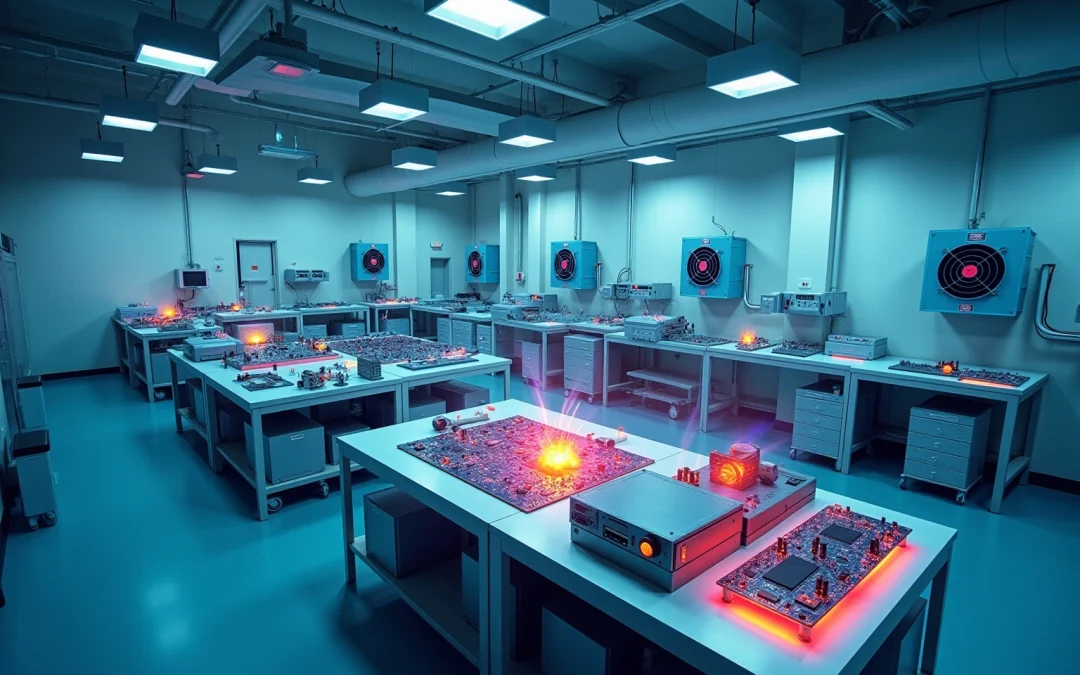Overview
Effective practices for utilizing circulating fans in electronics cooling encompass the careful selection of fan types tailored to airflow requirements, strategic positioning of fans to maximize air circulation, and the establishment of a routine maintenance schedule to guarantee peak performance. This article elucidates how critical factors such as air movement, fan compatibility, and proactive maintenance can substantially improve thermal efficiency while concurrently minimizing operational costs in electronic systems.
Introduction
In the realm of electronics, effective cooling transcends luxury; it emerges as a fundamental necessity for securing optimal performance and extending the longevity of components. Circulating fans are pivotal in this process, facilitating air movement that dissipates heat and averts damage from overheating. This article explores best practices for harnessing circulating fans in electronics cooling, providing insights into:
- Fan selection
- Seamless integration into existing systems
- Robust maintenance strategies
As technology advances and the demand for efficient thermal management escalates, the challenge persists: how can engineers maximize the effectiveness of these fans to enhance performance while simultaneously minimizing energy consumption?
Understand the Role of Circulating Fans in Electronics Cooling
Circulating devices are vital for effective electronics cooling, primarily by facilitating forced convection, which significantly enhances heat dissipation from critical components. By circulating air over heat-producing components, these devices play a crucial role in reducing localized hotspots and maintaining consistent operating temperatures. A thorough understanding of fluid movement patterns and their interaction with the thermal characteristics of electronic devices is essential.
For example, strategically positioning Gagner-Toomey’s DC input Tube Axial units and Centrifugal Blowers to direct airflow toward high-heat regions can markedly improve thermal efficiency. Moreover, circulating fans play a crucial role in achieving uniform temperature distribution within enclosures, preventing thermal throttling and ensuring the reliable operation of sensitive electronics.
Real-world applications, such as in power supplies and high-performance computing systems, underscore the effectiveness of well-executed fan temperature regulation strategies. Current statistics indicate that the fan market is projected to expand significantly, reaching approximately US$ 17,896.2 million by 2031, reflecting the increasing reliance on in the electronics sector.
As technology progresses, innovations in Gagner-Toomey’s electronically commutated (EC) axial devices are enhancing energy performance and operational lifespan, making them indispensable in modern electronic thermal management systems. Additionally, Gagner-Toomey provides IP protection in most models, ensuring reliability across various applications.
Engineers should carefully consider the types of fans available from Gagner-Toomey, including axial, centrifugal, and blower fans, to select the most suitable option for their specific needs. It is also crucial to assess the physical area available for fan installation to guarantee optimal ventilation and efficiency.
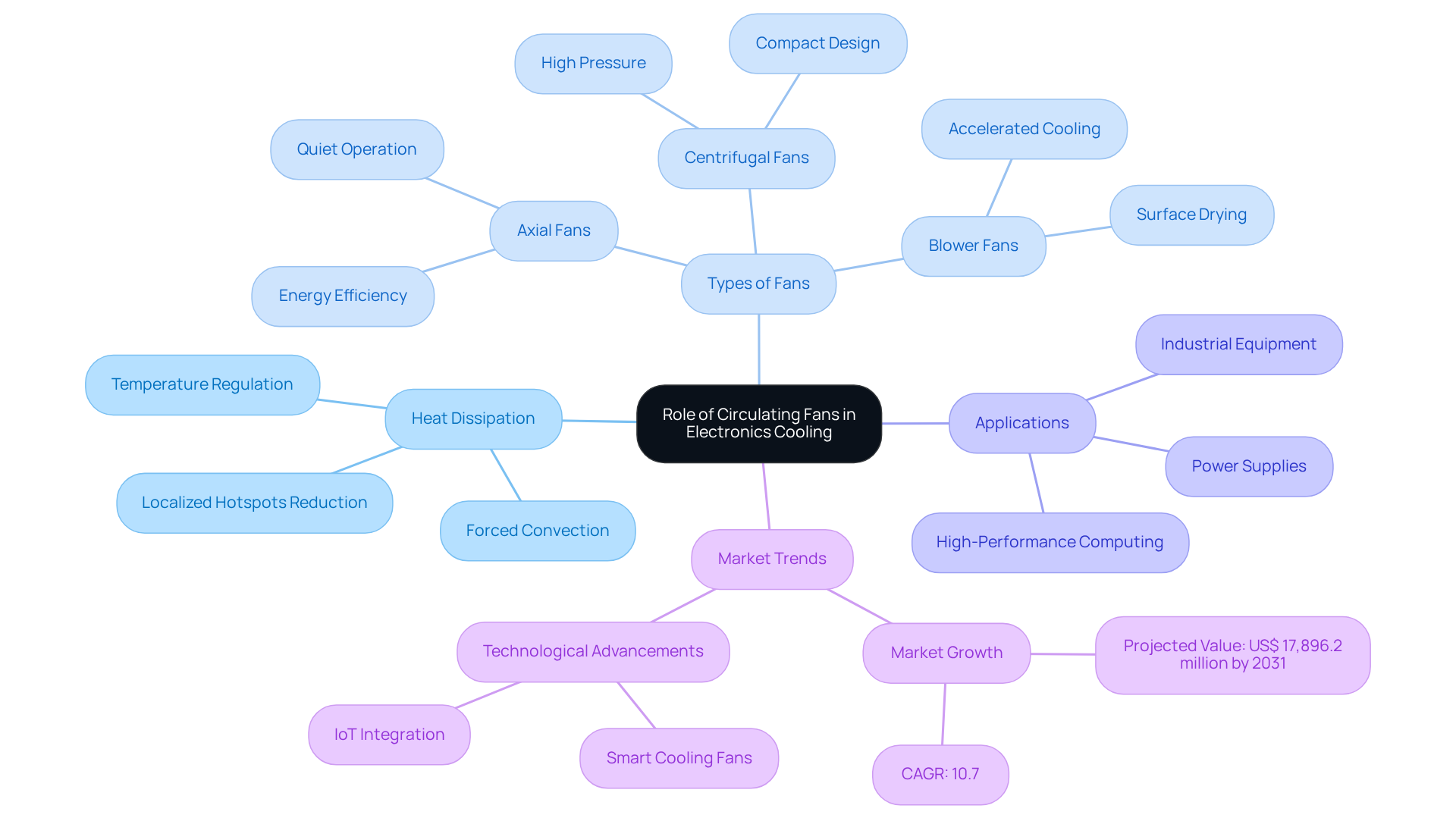
Select the Appropriate Circulating Fan for Your Application
Selecting the appropriate circulating fans for electronics cooling requires a thorough evaluation of several critical factors, including air movement requirements (measured in CFM), static pressure, and noise levels. For high-power applications, units with enhanced circulation and pressure ratings are essential to overcome resistance in confined spaces. Axial units are typically favored in high airflow scenarios, while centrifugal devices excel in environments that necessitate elevated static pressure. Furthermore, the fan’s size and form factor must align with your design specifications to guarantee compatibility.
Assessing the operational environment is equally vital; fans intended for harsh conditions may require features such as dust filters or moisture resistance to sustain performance. A case study exploring a temperature regulation solution implemented in a data center underscores the importance of selecting and size, demonstrating that such decisions can lead to substantial energy savings and improved thermal performance. By prioritizing these considerations, engineers can significantly enhance thermal efficiency and prolong the lifespan of electronic components.
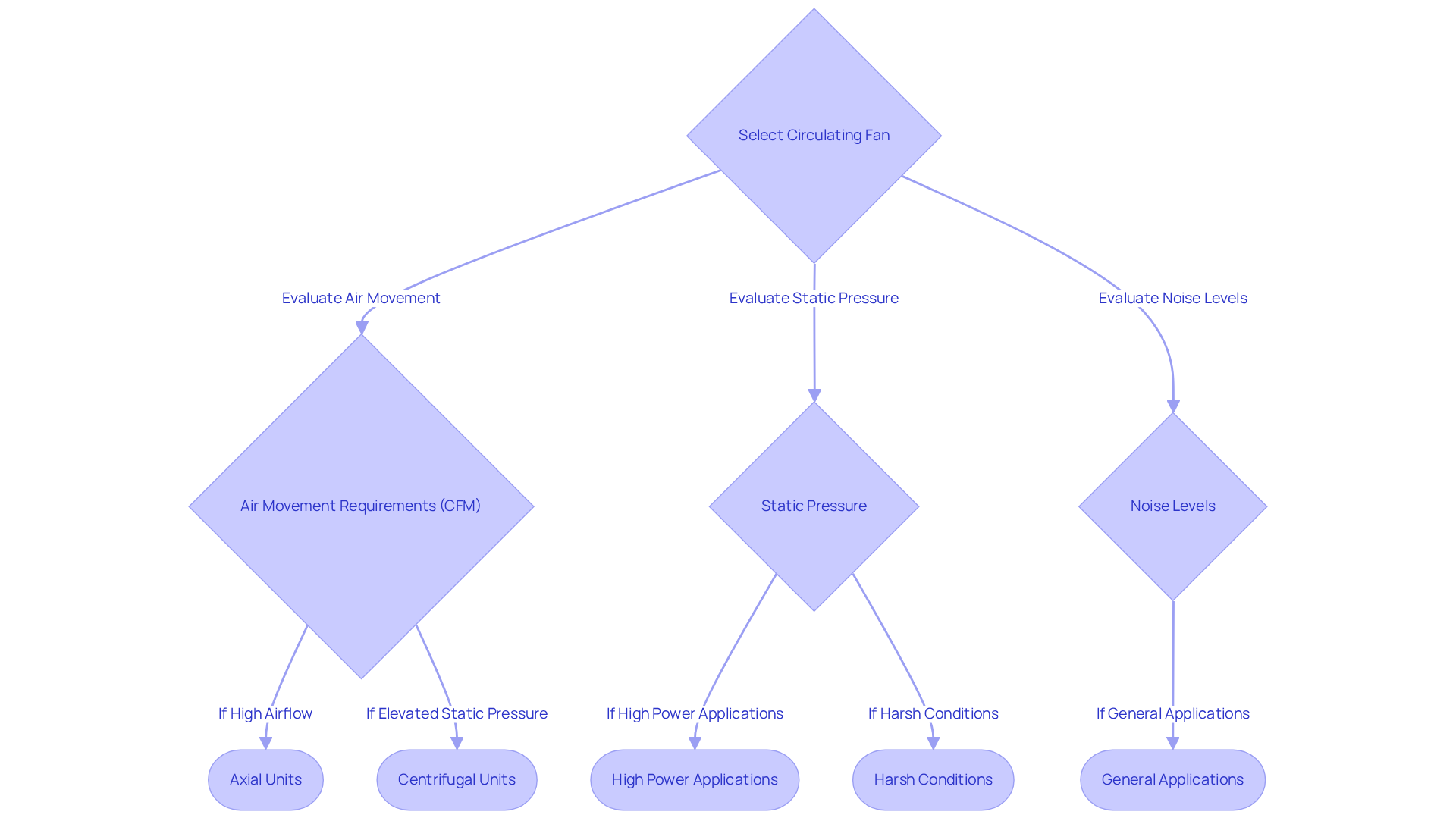
Integrate Circulating Fans into Existing Cooling Systems Effectively
Incorporating circulating fans into current cooling systems necessitates a thorough examination of and system configurations. Begin by assessing existing ventilation patterns to pinpoint areas prone to heat accumulation.
- Strategically position circulating fans to establish balanced circulation that directs cool air toward heated components while effectively expelling warm air.
- Computational fluid dynamics (CFD) simulations are essential for visualizing airflow patterns and optimizing fan placement, thereby ensuring maximum performance.
- Furthermore, compatibility with existing control systems is vital for seamless operation.
- For instance, integrating temperature sensors that adjust fan speed based on thermal load can significantly enhance energy efficiency.
A notable example can be observed in industrial control panels, where meticulous fan positioning has led to substantial improvements in temperature regulation and reduced component failure rates. Additionally, employing energy efficiency techniques such as economizer cycles and optimizing air circulation with circulating fans can further enhance the effectiveness of integrating fans.
It is crucial to minimize hot air re-circulation and cold air bypass to achieve optimal air management. Importantly, cooling constitutes approximately 30-40% of total energy consumption in data centers, highlighting the necessity of optimizing cooling systems. Successful case studies illustrate how effective fan integration and ventilation management can yield considerable operational cost reductions, as emphasized by Jinkyun Cho, who noted that air management is pivotal in lowering operating expenses.
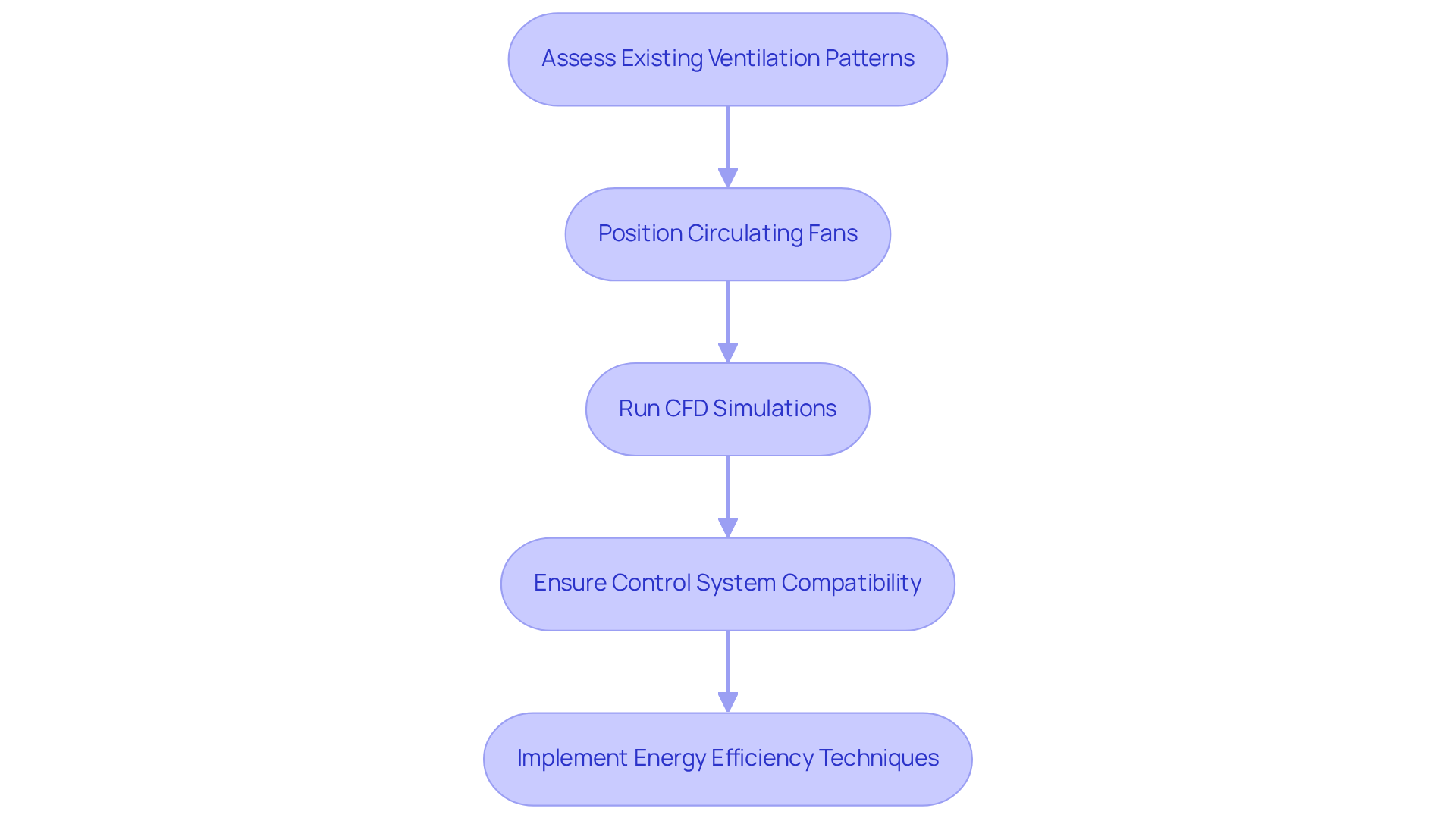
Maintain Circulating Fans for Optimal Performance
To ensure the optimal performance of circulating fans, implementing a regular maintenance schedule that includes cleaning, inspection, and testing is essential. Dust and debris can accumulate on fan blades and within the casing, leading to decreased air flow and increased noise levels. Employing compressed air to clean the fan blades, while ensuring that both intake and exhaust areas are unobstructed, is crucial. Furthermore, inspecting the fan’s bearings and motor for signs of wear or damage is vital, as these factors can diminish efficiency and elevate failure rates. Monitoring fan performance through metrics such as RPM and airflow can facilitate the early identification of potential issues before they escalate.
A case study conducted in a manufacturing facility illustrated that regular maintenance of circulating fans reduced fan-related downtime by 30%, thereby underscoring the significance of proactive care in cooling system management. Additionally, neglecting maintenance can result in substantial financial repercussions, with facilities facing an average loss of $108,000 per hour due to unplanned downtime. By incorporating predictive maintenance strategies, organizations can improve downtime forecasting by 85%, significantly enhancing overall operational efficiency.
Adhering to the 10% Rule for maintenance budgeting—allocating 10% of a fan’s initial cost annually—can avert breakdowns and prolong the lifespan of the equipment. For instance, a plant in the Philippines incurred an $8,000 repair bill due to overlooked roof fans, emphasizing the necessity of a structured maintenance approach. Ultimately, not only boosts their performance but also extends their lifespan, contributing to reduced operational costs.
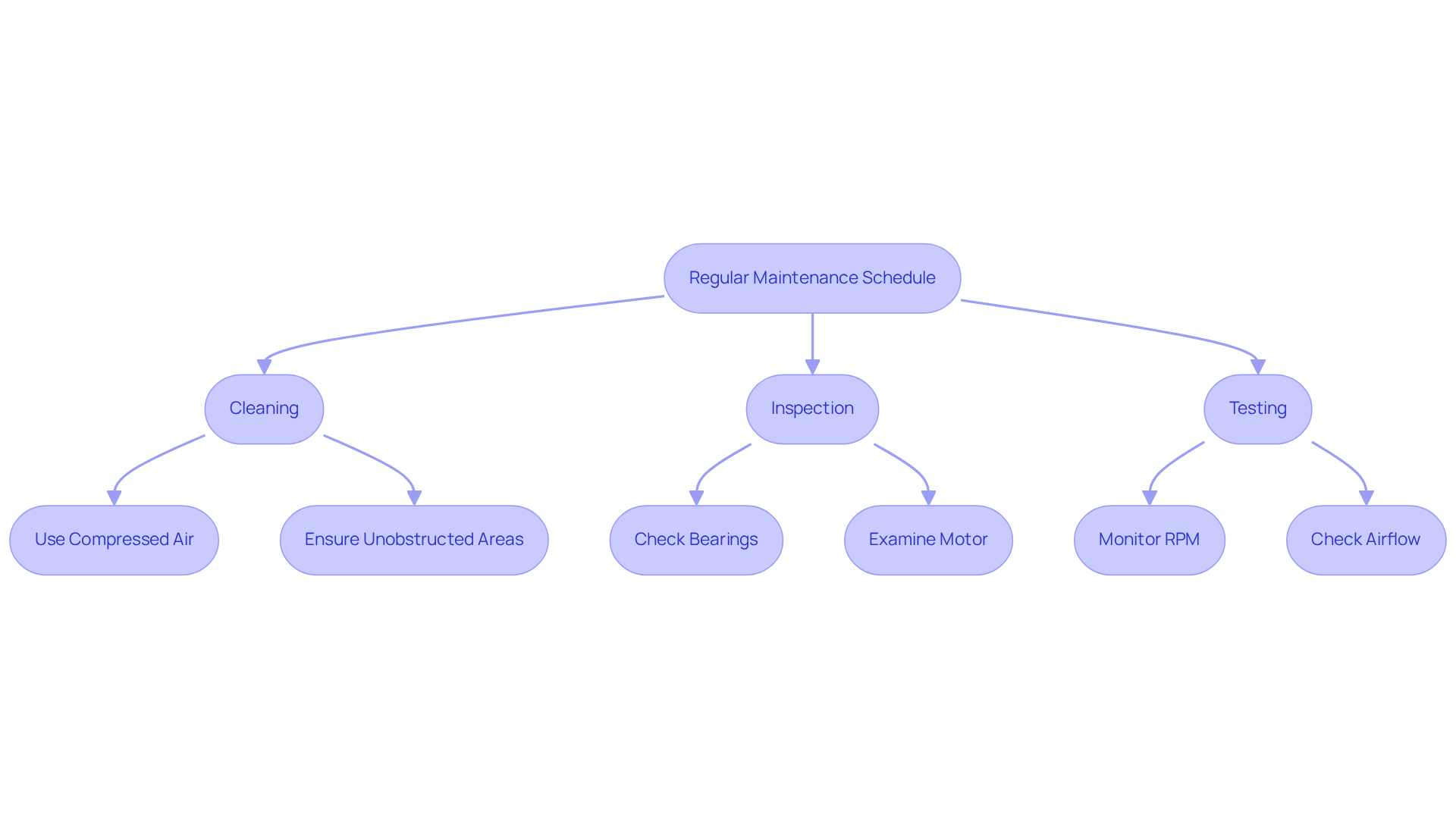
Conclusion
Effective cooling in electronics transcends mere efficiency; it is vital for ensuring the longevity and reliability of components. Circulating fans are integral to this process, facilitating air movement that dissipates heat and prevents overheating. By mastering the selection of the right fans, integrating them into existing systems, and maintaining them diligently, engineers can significantly enhance thermal management in electronic applications.
This article underscores several key practices, including the necessity of selecting the appropriate fan type based on airflow requirements and environmental conditions. Furthermore, the advantages of strategic fan placement to optimize air circulation are highlighted. Regular maintenance is also emphasized, illustrating how proactive care can minimize downtime and enhance operational efficiency. Real-world examples showcase the tangible benefits of these best practices across various settings, from data centers to manufacturing facilities.
Ultimately, leveraging circulating fans effectively is crucial for modern electronics cooling. Engineers are urged to adopt these best practices to not only boost performance but also reduce energy consumption and operational costs. As technology evolves, prioritizing efficient thermal management solutions will be essential for sustaining competitive advantages in the electronics industry.
Frequently Asked Questions
What is the primary role of circulating fans in electronics cooling?
Circulating fans facilitate forced convection, which enhances heat dissipation from critical components by circulating air over heat-producing areas, reducing localized hotspots and maintaining consistent operating temperatures.
How can the positioning of fans affect thermal efficiency?
Strategically positioning fans, such as Gagner-Toomey’s DC input Tube Axial units and Centrifugal Blowers, to direct airflow toward high-heat regions can significantly improve thermal efficiency and uniform temperature distribution within enclosures.
Why is uniform temperature distribution important in electronic devices?
Uniform temperature distribution prevents thermal throttling and ensures the reliable operation of sensitive electronics, which is crucial for their performance and longevity.
What are some real-world applications of circulating fans in electronics?
Circulating fans are effectively used in power supplies and high-performance computing systems, highlighting the importance of fan temperature regulation strategies in these applications.
What is the projected growth of the fan market in the electronics sector?
The fan market is projected to expand significantly, reaching approximately US$ 17,896.2 million by 2031, reflecting an increasing reliance on advanced temperature control solutions.
What innovations are being made in fan technology?
Innovations in Gagner-Toomey’s electronically commutated (EC) axial devices are enhancing energy performance and operational lifespan, making them essential for modern electronic thermal management systems.
What types of fans does Gagner-Toomey offer?
Gagner-Toomey offers various types of fans, including axial, centrifugal, and blower fans, allowing engineers to select the most suitable option for their specific cooling needs.
What should engineers consider when selecting fans for installation?
Engineers should assess the types of fans available and evaluate the physical area for fan installation to ensure optimal ventilation and efficiency.

